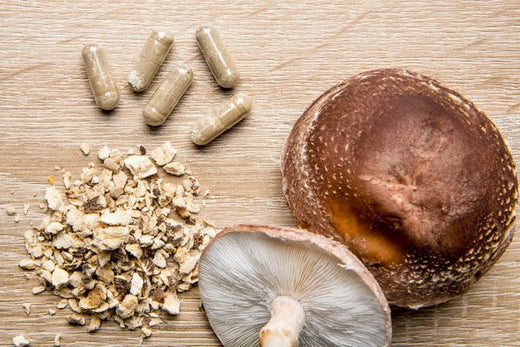11 Common Signs of Hormonal Imbalance

Briefing
Hormonal imbalances encompass a complex array of symptoms that can appear in various forms within the body. Indications and underlying causes of hormonal imbalances can encompass factors such as disrupted blood glucose levels, systemic inflammation, adrenal exhaustion, HPA-axis dysregulation, and insulin resistance, among others.
In this article, we will examine how hormonal imbalances can impact the well-being of both men and women. Specifically, we will focus on the interaction and equilibrium of the sex hormones—estrogens, progesterone, and androgens—and their connection with endocrine organs and systems.
A hormone imbalance can present itself as menstruation issues characterized by heaviness and pain in women, fluctuations in mood, dryness in the vaginal area, decreased libido, acne, infertility, unexplained weight gain, hair loss, fatigue, cognitive impairment, stress, and anxiety.
This article aims to dissect the symptoms associated with hormone imbalance and provide natural and holistic approaches that can be undertaken to restore balance and promote harmonious hormone health.
Table of Contents
-
The Indications of Hormonal Imbalance in Females
-
Excessive or Distressing Menstrual Periods
-
Decreased Sexual Desire
-
Inadequate Sleep Quality
-
Grown-up Breakouts
-
Fertility Challenges
-
Vaginal Dryness
-
Fluctuating Moods
-
Signs of Hormonal Imbalance in Men
-
Experiencing Erectile Dysfunction
-
Decreased Body Hair Growth
-
Low Sperm Count
-
Decreased Sexual Desire
-
Methods for Naturally Restoring Hormone Balance
-
1. Striving for Stress Balance
-
2. Enhancing Sleep Quality
-
3. Reduce Inflammation Levels
-
4. Remove Sugar From Your Diet
-
5. Maintain a Consistent Exercise Routine
-
Seek advice from a healthcare professional
-
Frequently Asked Questions
-
How can I determine if I have a hormonal imbalance?
-
What are the causes of hormonal imbalance?
-
What are some natural methods to address the hormonal imbalance?
-
In Summary
-
References
The Indications of Hormonal Imbalance in Females
As females, we are often labeled as "hormonal" in a classical manner. But what does this mean, and why does it occur? What are the indications of hormone imbalance? There are numerous ones. Firstly, PMS and distressing menstrual periods are common, but they should not be considered normal.
PMS and painful periods are caused by imbalances in the sex hormones and the proportions of estrogens, progesterone, and androgens.
Estrogen
Estrogen refers to a trio of female steroid hormones. We have E1 - Estrone, E2 - Estradiol, and E3 - Estriol.
Estrone is the dominant estrogen during menopause. It is produced by the ovaries, adipose tissue, and adrenals.
Estriol E3 is prominent and elevated during pregnancy and serves as a weak estrogen that supports pregnancy (it is also what is typically measured in a pregnancy test).
Estradiol is the primary estrogen in women of reproductive age. It is also the estrogen that influences PMS and painful period symptoms through its conversion.
Estradiol is the most potent estrogen. It is released from the ovaries (specifically the follicles) and can be converted into either 2-OH (2-Hydroxyesterone), which is a protective and weaker version, 4-OH (4-Hydroxyestrone), an inflammatory version, or 16OH (16a-Hydroxyesterone), a symptomatic version that promotes tissue growth and estrogenic activity.
The way we lead our lives, the food we consume, the amount of sleep we get, and how we manage stress to determine which pathway Estradiol follows. Consequently, this influences whether we experience pleasant and unexpected periods or painful and debilitating ones.
Estradiol, particularly 4OH, and 16OH, also contribute to conditions such as PCOS (Polycystic Ovary Syndrome), endometriosis, and other gynecological conditions.
Estrogen plays a crucial role in women's health as the primary anabolic hormone. It helps build and protect bone health, strengthens collagen in the skin, regulates cholesterol levels, increases BDNF (brain-derived neurotrophic factor), improves mood and cognition, and enhances serotonin uptake in the brain.
From this list, we can observe the significant functions that healthy estrogen levels perform in the body and, conversely, how symptoms of hormonal imbalance can arise due to low estrogen levels.
Estrogen receptors are present in every single one of our cells. When estrogen binds to these receptors, it influences gene expression, which is why sex hormones have such a profound impact on our physiology (e.g., cramps - muscles, mood - brain, appetite - digestion).
Only "free" estrogen can bind to receptors. If it becomes bound with SHBG (sex hormone binding globulin), it loses its ability to exert its effects (which is actually beneficial).
When there is an excess of estrogen in the body, which is quite common in most women, you may experience the following symptoms:
- Heavy, clotted, and painful periods
- Breast tenderness
- Anxiety and concern
- Mood swings
- Fluid retention
- Fat deposits specifically on the back of the arms, hips, thighs, and buttocks
- Depression and mood swings
- Headaches and migraines during the menstrual cycle
- Deep vein thrombosis and varicose veins
Progesterone
Progesterone is secreted by the corpus luteum following ovulation, ensuring the optimal condition of the uterine lining for a potential pregnancy.
Progesterone maintains a delicate balance with estrogen. These two hormones function in a reciprocal manner, akin to a teeter-totter. An imbalance in one leads to an imbalance in the other. Symptoms of low progesterone and estrogen levels are observable during menopause, perimenopause, and amenorrhea (absence of periods).
Naturally, progesterone possesses anti-anxiety and anti-depressive properties. It enhances GABA pathways, which serve as calming neurotransmitters. Generally, a deficiency in progesterone is more common than an excess, and associated symptoms of deficiency include:
- Symptoms of estrogen dominance
- Spotting in the middle of the menstrual cycle
- Light, scanty, or absent periods
- PMS during ovulation
- Painful ovulation
- Symptoms of testosterone dominance
Testosterone
Next, we have the androgens, which, similar to estrogen, belong to a group of steroid hormones. Among these, testosterone is the primary one found in both females and males.
Optimal testosterone levels are crucial for women's health, just as they are for men. Women naturally produce small amounts of testosterone from their ovaries and adrenal glands. Testosterone plays a role in maintaining healthy skeletal muscle mass, enhancing cognition, supporting libido, and promoting bone density.
Excessive levels of testosterone may give rise to symptoms such as:
- Hormonal acne, particularly along the jawline
- Hirsutism (excessive hair growth)
- PCOS (Polycystic Ovary Syndrome) / PCO
- Insulin resistance and type 2 diabetes
- Accumulation of visceral fat around vital organs
- Missed, scanty, or light periods
- Feelings of anger and irritability
Low levels of all three hormones present as:
- Menopause/andropause
- Hot flashes
- Amenorrhea
- Fatigue
- Prolonged recovery time
- Disrupted sleep
- Imbalanced moods

Excessive or Distressing Menstrual Periods
Menstrual periods that are heavy or accompanied by pain occur as a result of menstrual cycles characterized by elevated levels of estrogen, particularly 4OH and 16OH estrogen. These elevated estrogen levels lead to inflammation, thickening of the uterine lining, and associated symptoms. Menstrual cycles with dark or clotted blood, prolonged heavy bleeding accompanied by cramping, breast tenderness, and other symptoms of estrogen dominance all indicate an excess of estrogen.
Several factors can contribute to elevated estrogen levels. High levels of stress are one possible cause, and likely the primary one.
A deficiency in progesterone or exposure to xenoestrogens found in personal care products, a diet rich in pro-inflammatory sugars and oils, prenatal exposure, an overwhelmed liver, and conditions such as gut inflammation, leaky gut, or dysbiosis can all contribute to elevated estrogen levels.
Further below, we will delve into strategies for effectively balancing sex hormones.
The current approach in conventional medicine involves using contraception (birth control) to suppress symptoms and disrupt communication between the brain and ovaries. However, once you decide to discontinue birth control, symptoms of hormonal imbalance will resurface because the underlying imbalance remains unresolved. The synthetic hormones in birth control merely alleviate and mask the symptoms temporarily.
Moreover, working with a healthcare professional is beneficial for restoring hormone balance and supporting the detoxification of estrogen.

Decreased Sexual Desire
Diminished sexual desire is another prominent symptom resulting from hormonal imbalance. Once again, stress plays a significant role.
When the body faces high levels of stress, it directs all its attention, energy, and resources toward survival. Reproduction, being the least crucial system at that time, is put on hold.
Survival takes precedence over reproduction as the body recognizes its inability to support a healthy pregnancy and conceive when under stress.
Low libido is associated with decreased levels of testosterone, estrogen, and progesterone. All three hormones are necessary for a healthy sex drive.
It's important to acknowledge that as humans, and specifically as women, we are naturally inclined to have a libido. Women are designed to experience sexual desires and seek sexual intimacy, as our biological purpose revolves around reproduction. When this desire is absent, it can affect us on deeper emotional, psychological, and physical levels. Low libido often serves as a symptom of underlying issues that may have been left unaddressed.
Unfortunately, there is often a sense of shame, stigma, and stereotypes surrounding a decreased sex drive in women.
Exploring the reasons for low libido with the assistance of a healthcare professional, be it from an emotional, psychological, or physiological standpoint, can be a beneficial approach. Additionally, considering the use of natural libido-boosting products is worth exploring.
Furthermore, it is scientifically proven that sexual pleasure and orgasms can reduce stress and cortisol levels while enhancing immune function. During sexual activity, the release of serotonin, dopamine, and endorphins occurs, fostering a sense of bonding, connection, and feeling valued and cherished. It is a natural basis of being a pleasure-seeking human being.
Inadequate Sleep Quality
The correlation between poor sleep and hormone imbalance is often overlooked, yet these two factors are inherently and reciprocally intertwined.
This connection becomes evident and widely acknowledged during perimenopause and menopause, as the decline in sex hormones leads to common symptoms such as night sweats, hot flashes, disrupted sleep, and insomnia.
Sleep regulation is influenced by sex hormones. Estrogen and progesterone receptors are present in various areas of the brain that govern our sleep-wake cycles.
Both low estrogen and progesterone levels are directly associated with disrupted sleep, diminished sleep quality, and difficulty falling asleep.
Studies conducted on mice subjected to sleep deprivation, with only 6 hours of sleep (considered sleep deprivation when 7 hours or less), revealed that when these mice were subsequently administered estradiol and progesterone, those receiving the additional hormones experienced a greater increase in REM sleep but less NREM (deep) sleep compared to the untreated mice.
Interestingly, when both female and male mice underwent gonadectomy (removal of reproductive organs), no differences were observed in their sleep-wake cycles. This underscores the significance of sex hormones in influencing sleep patterns.
Grown-up Breakouts
Grown-up breakouts (Acne vulgaris) manifest as a hormonal disparity specifically along the jawline, indicating an excess of androgens.
Androgens stimulate the sebaceous glands in the skin to produce more oil (sebum), thereby increasing oil production. This process raises the likelihood of follicle blockage, leading to acne development and triggering breakouts.
As mentioned earlier, an excess of androgens, produced by the ovaries and adrenals, are the primary sex hormones responsible for causing adult acne. Balancing and increasing the levels of sex hormone-binding globulin (SHBG) is a potential way to support and decrease adult acne.
SHBG functions like a sponge, absorbing excessive androgens, aiding in their safe detoxification, and facilitating elimination through the liver and gastrointestinal tract.
Natural methods to enhance SHBG levels include nettle root, Pine Pollen extract, flaxseeds, fermented organic soy (due to its lignans and phytoestrogens), exercise, intermittent fasting, and caffeine.

Fertility Challenges
Facing fertility challenges and experiencing difficulty in getting pregnant encompasses a complex subject where our sex hormones play a crucial role. Adequate levels of estrogens, progesterone, and androgens are necessary for conception and maintaining a pregnancy.
Progesterone, in particular, holds a vital position in pregnancy and gestation. It supports the uterine lining, allowing for the attachment of an egg and the subsequent growth of a fetus.
Estrogen, an anabolic hormone, facilitates the growth of the uterine lining & the blood vessels that supply nutrients to these cells. When there is an imbalance in either of these hormones, conceiving may become difficult.
It is needful to address the effects of stress hormones on sex hormones and fertility. The adrenals produce DHEA (dehydroepiandrosterone), a precursor hormone that can be converted into cortisol, progesterone, estrogens, or testosterone.
During times of stress, DHEA is often converted into cortisol to cope with perceived stressors, leading to reduced production of sex hormones.
Furthermore, chronic stress and cortisol release disrupts blood sugar balance, slow down metabolism, deplete essential nutrient stores, promote weight gain, impair gut health, and disrupts mood balance. All of these factors contribute to overall reproductive health and healthy pregnancy.
The HPGA (hypothalamus-pituitary-gonadal axis) is the feedback loop involving the brain, adrenals, and ovaries. Chronic stress inhibits reproductive signaling, indicating that it is not safe for the body to conceive.
Vaginal Dryness
Vaginal Dryness is a symptom of low hormone levels, particularly estrogen and progesterone.
Estrogen, once again, as an anabolic and lubricating hormone, supports the development of a thick, moisturized uterine lining and promotes the production of vaginal fluid, which is essential for a healthy vaginal microbiome and sexual well-being.
Consider having your hormone levels tested by a healthcare professional or by opting for a comprehensive hormone assessment such as a DUTCH test. This approach is highly advantageous as it provides a more reliable and comprehensive evaluation of hormone imbalance compared to a single snapshot blood serum test. Saliva and urine tests conducted over a month-long period offer a more comprehensive view.
In certain cases, thyroid hormone testing and/or hormone replacement therapy may also be beneficial under the guidance of a licensed practitioner.

Fluctuating Moods
Fluctuating moods are a common symptom associated with hormone imbalance, and there is scientific evidence to support this notion.
Both estrogen and progesterone have natural anti-depressant properties. As the levels of these hormones decrease during the premenstrual week, mood can dip, emotions can intensify, energy levels may decrease, and additional physical symptoms may arise.
The brain contains receptors for estrogen and progesterone, which play a role in influencing mood, emotions, cognition, and memory. Furthermore, progesterone stimulates the GABA pathway, which is responsible for promoting a sense of calm. When progesterone levels are low, many women find it challenging to relax and unwind. They may experience excessive thinking, worry, anxiety, and emotional exhaustion.
To support and increase progesterone levels, incorporating Cordyceps mushrooms, gluten-free and uncontaminated oats, flaxseeds, quinoa, whole grains, pumpkin seeds, seafood, and cacao into the diet can be beneficial. Additionally, managing stress and prioritizing optimal sleep are important factors to consider.
Signs of Hormonal Imbalance in Men
In men, hormonal imbalance is characterized by weight gain in the chest, hips, and thighs, and a decrease in muscle mass and tone. It can also lead to low libido, erectile dysfunction, low sperm count, and episodes of excessive thinking, anxiety, and depression.
These changes are often attributed to an increase in aromatase activity, which is the biological pathway where enzymes convert testosterone to estradiol. Consequently, the physical composition is altered, and adipose tissue tends to accumulate in areas associated with estrogen dominance.
Another aspect is the conversion of testosterone to DHT (dihydrotestosterone) by 5-alpha reductase enzymes. DHT is a more potent and active male androgen. Excessive levels of DHT may contribute to a receding hairline and male pattern baldness, accelerating these conditions.

Experiencing Erectile Dysfunction
The occurrence of erectile dysfunction (ED) can be linked to decreased levels of free testosterone in the bloodstream and body.
In addition to the role of testosterone, chronic stress (whether physical, mental, or environmental) and insufficient sleep can also have an impact on maintaining healthy testosterone levels, potentially leading to erectile dysfunction.
While sex hormones are a significant factor in ED, it is important to recognize that other elements such as high blood pressure, early stages of atherosclerosis, obesity, and metabolic disorders can also contribute to the symptoms of ED.
It is suggested to see a healthcare professional undergo a comprehensive evaluation in order to identify any underlying hormone imbalances that may be causing ED, addressing both physical and emotional or psychological aspects.
Decreased Body Hair Growth
The growth of body hair is primarily driven by testosterone.
A reduction in the conversion of DHEA to testosterone, whether caused by stress or elevated levels of SHBG (sex hormone binding globulin), can contribute to a lack of hair growth.
Conversely, we observe the opposite phenomenon. As men age, they tend to become hairier as the hair follicles have been exposed to testosterone since the time of puberty, leading to the transformation of fine hair into thicker hair.
Low Sperm Count
A decrease or insufficiency of DHT (dihydrotestosterone) in the body can lead to a decline in sperm production.
DHT plays a role in regulating semen volume and viscosity. Lower testosterone levels in men have been shown to have no impact on sperm function, but rather are associated with low libido and erectile dysfunction.
A particular study highlights the effect of exogenous testosterone as a form of contraception, inhibiting the release of follicle-stimulating hormone and luteinizing hormone, which is responsible for infusing sperm production in the testes. (7-9)

Decreased Sexual Desire
A decline in sexual drive can be attributed to various factors, with low testosterone levels playing a significant hormonal role.
Reduced testosterone levels may arise from an unhealthy lifestyle, and increased conversion to estrogen (aromatization) caused by factors such as alcohol, stress, medications, and drug use, liver overload, systemic inflammation, obesity, type 2 diabetes, and accelerated aging.
Methods for Naturally Restoring Hormone Balance
Achieving hormone balance necessitates a comprehensive and sustainable approach that targets the underlying causes.
There are six factors to consider when aiming to restore hormone levels: effectively managing stress, improving sleep quality, engaging in regular physical activity, reducing consumption of sugar and processed foods, and minimizing inflammation. These measures collectively contribute to achieving hormonal equilibrium.

1. Striving for Stress Balance
Stress sends a signal to the body that reproduction is not currently a safe or viable option. When stress levels become excessive, the reproductive system is inhibited, resulting in a decreased desire for sexual activity.
Stress can manifest in various forms:
- Physical stress - excessive exercise or strain on the body.
- Emotional stress - challenging relationships, societal pressures, or manipulation.
- Psychological stress - financial difficulties, bereavement, or loss of a loved one.
- Environmental stressors - exposure to pollutants, contaminants, and toxins in food, water, hygiene products, and workplaces.
Addressing stress requires a multifaceted approach. There are numerous methods to reduce stress levels, including:
- Engaging in moderate exercise and movement.
- Practicing yoga.
- Incorporating meditation into daily routines.
- Taking leisurely walks, especially with a pet.
- Participating in breathwork exercises.
- Finding solace in reading.
- Journaling to express thoughts and emotions.
- Spending time in nature.
- Setting boundaries and effectively communicating them.
- Engaging in authentic conversations and interactions.
- Pursuing activities that bring joy and passion.
- Including adaptogenic herbs and hormone-balancing products in the diet.
- Considering supplements like Magnesium and Activated B Vitamins.
By adopting these strategies, one can strive for a healthier balance of stress levels and promote overall well-being.

2. Enhancing Sleep Quality
Sleep is an often underestimated remedy for restoring hormone balance.
Research indicates that even a single night of sleep restriction can lead to lower testosterone levels in men. This is because testosterone is released from the hypothalamus to the testes between the hours of 11 pm and 1 am during sleep. Missing out on this crucial release and its associated functions can disrupt hormonal balance.
To improve sleep quality and alleviate symptoms of hormonal imbalance like hot flashes and night sweats, consider incorporating these healthy sleep habits:
- Establish a routine bedtime and wake-up time to promote a regular sleep routine.
- Maintain an optimal sleeping temperature of around 18 degrees Celsius (64 Fahrenheit) in your bedroom.
- Take a warm shower before bedtime to facilitate relaxation.
- Begin winding down at least 30 minutes to an hour before bed by limiting screen time and turning off electronic devices such as phones and TVs.
- Clear your mind by jotting down tomorrow's to-do list, allowing your brain to let go of any lingering thoughts.
- Use natural sleep supplements to promote a calm mind and a relaxed nervous system. Consider options like magnesium, Reishi Mushroom, and other sleep-inducing herbs such as passionflower, zizyphus, Pearl powder, chamomile, Schizandra berry, kava root, and valerian.
By adopting these healthy sleep practices, you can enhance sleep quality and support the restoration of hormonal balance.
3. Reduce Inflammation Levels
Inflammation plays a significant role in driving hormonal imbalance, making it crucial to address.
There are various approaches to reduce inflammation, including:
- Improve sleep quality: Prioritize restful sleep as it aids in reducing inflammation.
- Manage stress effectively: Implement stress management techniques to minimize its inflammatory effects.
- Engage in regular exercise: Physical activity contributes to lowering inflammation levels.
- Opt for a healthier diet: Make dietary choices that promote anti-inflammatory effects and avoid processed foods.
- Consume antioxidant-rich foods: Increase your intake of foods known for their antioxidant properties.
- Consider natural supplements: Omega-3 fatty acids found in fish oil have been thoroughly studied for their anti-inflammatory benefits.
However, it's vital to note that not all fish oils are equal, and quality matters, even if it comes with a raised price tag. Many inexpensive fish oil products on the market are of low quality and may contain pro-inflammatory additives like soybean or plant oils. Moreover, some products use farmed fish fed with GMO corn and soy, lacking the essential Omega-3 fatty acids required to effectively reduce inflammation.
If you choose to add fish oil to your diet, select reputable brands that provide certificates of analysis and source their fish from clean waters, preferably from wild-caught varieties. By prioritizing high-quality fish oil, you can ensure its effectiveness in reducing inflammation and supporting your overall health.

4. Remove Sugar From Your Diet
Sugar plays a significant role in driving inflammation, which is at the root of hormonal imbalances and their associated symptoms.
To address this, it is essential to reduce or eliminate processed and refined sugars commonly found in processed foods. By doing so, you can experience a reduction in insulin resistance, imbalances in blood glucose levels, weight gain, and cellular aging – all of which contribute to decreased testosterone levels.
Fortunately, we have a wide range of fantastic alternatives to sugar available in today's era. Consider incorporating the following options:
- Choose whole forms of sugar, such as fruit and berries, which provide natural sweetness.
- Opt for natural sweeteners like honey, pure maple syrup, dates, and coconut sugar instead of artificial and processed sugars.
- Explore low glycemic sweeteners like stevia, thaumatin, or monk fruit for a healthier alternative.
By consciously limiting your daily sugar intake or completely eliminating sugar from your diet over time, you can take significant steps toward restoring hormonal balance and getting your hormones back on track.
5. Maintain a Consistent Exercise Routine
Consistently engaging in physical exercise has been consistently proven to enhance testosterone levels and overall hormone health. Regular moderate exercise creates a positive feedback loop.
Testosterone is important in protein synthesis and prevents protein breakdown and muscle degradation within the muscles. Following intense resistance training, testosterone levels rise, prompting the body to adapt and release more testosterone to enhance resilience.
Moreover, regular exercise positively impacts metabolic markers such as blood glucose, insulin, and leptin sensitivity. It also reduces inflammation, improves cardiovascular function and blood circulation, and even reverses erectile dysfunction.
Furthermore, movement and exercise have a profound effect on mental well-being, self-confidence, and a positive state of mind, naturally leading to an improved libido and sexual desire.

Seek advice from a healthcare professional
As always, it is suggested to seek guidance from your doctor or healthcare professional regarding any symptoms or conditions discussed in this article, or if hormone replacement therapy is deemed necessary. Every individual is unique, and therefore, the information offered in this article is intended solely for informational purposes and should not be regarded as medical advice or treatment recommendations.
Frequently Asked Questions
How can I determine if I have a hormonal imbalance?
You may suspect a hormonal imbalance if you are experiencing physical symptoms such as painful or heavy periods, low libido, acne, sleep disturbances, mood swings, weight gain, breast tenderness, erectile dysfunction, infertility, and other symptoms mentioned in this article.
What are the causes of hormonal imbalance?
Hormonal imbalances can be caused by various factors, including a diet high in processed sugar and inflammatory foods, excessive alcohol consumption, lack of physical activity, increased exposure to toxins, an overwhelmed liver, chronic stress, and inadequate sleep.
What are some natural methods to address the hormonal imbalance?
Natural approaches to address hormonal imbalance include regular exercise, reducing sugar and processed food intake, consuming whole foods, managing stress effectively, improving sleep quality, and incorporating natural supplements and adaptogens into your diet, such as Reishi Mushroom and Cordyceps Mushroom.

In Summary
Hormonal imbalances can manifest in various ways and affect different aspects of our well-being, including libido, skin health, mood, body composition, weight, sleep, and fertility. These imbalances may also be related to thyroid hormones.
Regardless of gender, achieving hormone health and restoring balance requires a comprehensive and long-term approach that promotes lasting vitality and happiness.
If you suspect hormonal imbalances, it is advisable to consult a healthcare professional and take immediate steps to implement necessary lifestyle changes.
Apply the insights from this article to proactively develop healthy sleep habits, adopt stress reduction techniques, make healthier food choices, prioritize high-quality water consumption, and incorporate natural supplements, medicinal mushrooms, and adaptogens into your diet. By doing so, you can restore balance and regain optimal hormonal health.
Written by Eliza Hedley
Eliza is a health, mindset, and abundance enthusiast obsessed with helping millennials experience living at a higher level.
Her relaxed new-age approach and understanding of nutrition and wellness see her empowering and coaching individuals to understand that their health is the ultimate asset. Upon experiencing firsthand the power and place of tonic herbalism and medicinal mushrooms in everyday life, Eliza’s become an adaptogen fangirl and feels their utilization in today’s world is essential for abundance and well-being.
Website: https://theholisticsister.com
Instagram: @the_holistic_sister_
References
Testosterone insufficiency in women: fact or fiction? https://www.bumc.bu.edu/sexualmedicine/publications/testosterone-insufficiency-in-women-fact-or-fiction/
Sleep in Women Across the Life Span https://www.ncbi.nlm.nih.gov/pmc/articles/PMC6045782/
When does estrogen replacement therapy improve sleep quality? https://www.sciencedirect.com/science/article/abs/pii/S0002937898705393
Progesterone Prevents Sleep Disturbances and Modulates GH, TSH, and Melatonin Secretion in Postmenopausal Women https://academic.oup.com/jcem/article/96/4/E614/2720877
https://www.ncbi.nlm.nih.gov/pmc/articles/PMC6045782/
Glucocorticoids, Stress, and Fertility https://www.ncbi.nlm.nih.gov/pmc/articles/PMC3547681/
Testosterone Is a Contraceptive and Should Not Be Used in Men Who Desire Fertility https://www.ncbi.nlm.nih.gov/pmc/articles/PMC6305868/
Dihydrotestosterone regulation of semen in male pseudohermaphrodites with 5 alpha-reductase-2 deficiency https://pubmed.ncbi.nlm.nih.gov/8045956/
The effect of 5 alpha-reductase inhibitors on erectile function https://pubmed.ncbi.nlm.nih.gov/18421068/
Low Testosterone (Male Hypogonadism) https://my.clevelandclinic.org/health/diseases/15603-low-testosterone-male-hypogonadism
Sex hormones play a role in vulnerability to sleep loss on emotion processing tasks https://www.sciencedirect.com/science/article/pii/S2451994417300160
Cross-sectional analysis of sleep hours and quality with sex hormones in men https://www.ncbi.nlm.nih.gov/pmc/articles/PMC6376994/
Testosterone Physiology in Resistance Exercise and Training https://link.springer.com/article/10.2165/11536910-000000000-00000






